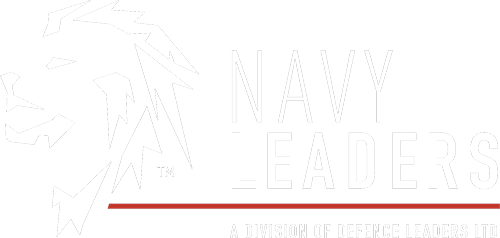Navy Tech 2025 Hits The Heights From Day One
)
What a phenomenal start to our three-day Navy Tech 2025 conference we’ve had here in Helsinki!
A packed agenda with 60-plus scheduled speakers attracted more than 600 attendees from over 30 nations on the opening day alone.
Commander of the Finnish Navy Rear Admiral Tuomas Tiilikainen did a marvellous job of opening our morning plenary session, setting the scene for us with an illuminating description of how Finland’s maritime forces are integrating into the wider NATO alliance.
“It is a shift that requires not only operational changes but also a change of mindset,” he noted, adding, “Our focus has expanded beyond national defence.”
Now, he said, a wider view was being taken of Baltic and Arctic security, taking in “interoperability as necessity,” a “fight tonight” approach to readiness, and the need for constant adaptation and evolution to react to an ever-changing security situation.
He also noted how NATO integration was an ongoing process built on solid foundations, and stressed the need for plans to be continually refined and operationally tested on exercises such as Freezing Winds 24 so they could be updated and maintain relevance.
The Commander of the Estonian Navy Commodore Ivo Vark offered insights on the opportunities and challenges offered by uncrewed maritime systems for smaller navies.
He described the challenges posed to autonomous and uncrewed vessels by littoral environments and physical and electronic countermeasures, but also the opportunities they offered when it came to patrolling and ISR missions.
Rear Admiral Paul Flos, Programme Director of Naval Materiel Cooperation for the Netherlands Ministry of Defence, talked about the Northern Naval Capability Cooperation’s work in a variety of areas including underwater security via SeaSEC and its forthcoming industry Challenge Weeks, hybrid propulsion, integrated logistics support and international network expansion.
And James Gavin from the U.K.’s Defence Equipment and Support agency gave a fascinating insight into its role helping firms develop and deploy drone capabilities for use in Ukraine, described as a shift into "prototype warfare.”
He talked about DE&S’s 3-2-1 competitive acquisition model that specified desired capabilities and cost parameters for a given system, selected three minimum viable products, then two minimum viable deployable capabilities, and finally — and crucially — one acquisition at scale, giving tangible benefits to the winner that justified industry involvement, even for SMEs.
“Competition really works,” he explained. “There’s an intent to exploit the capabilities that are developed at scale… If there’s no intent to exploit, why bother?”
The morning also took in interesting contributions from industry speakers and sponsors: BAE Systems described its varied work using a “systems of systems” approach to delivering solutions and talked about the lessons of the Ukrainian conflict, where capabilities were being countered in “days and weeks, not months and years.”
NVL, meanwhile, talked eloquently about its model-based system engineering approach to naval vessel design, which sought to reconcile huge systemic complexity with agility of development.
The afternoon’s session proved equally rewarding. Autonomous systems were a recurring theme; we heard from the Swedish Defence Research Agency about simplifying the challenges of research, from both logistical and legal perspectives, and the merits of a “fight tonight, but prepare for tomorrow” approach.
Teledyne Marine provided an engaging and in-depth overview of the many different aspects and abilities of different uncrewed systems, suggested combined-use scenarios for anti-submarine warfare, and the trend towards enhanced endurance, larger assets, and expanded payload capabilities.
Captain Tadas Jablonskis gave an impressively clear-sighted assessment of both the need for the Lithuanian Navy to implement uncrewed systems, and the challenges that doing this will present.
On the one hand, he noted how USVs similar to those used by the Ukrainians in the Black Sea survived “about five waves” in Baltic Sea conditions; but he also noted how transitioning their navy in the 2030s to a single-design, multi-function modular-design vessel acting as a carrier for autonomous assets would bring great logistical benefits, describing the current legacy mix as a nightmare and observing “the modular solution is the only solution.”
The work of the Joint Expeditionary Force (JEF) was the topic from its Assistant Chief of Staff, Captain Dan Thomas. His presentation took in both an overview of JEF’s make-up and role, and a focus on one of its most high-profile and ongoing recent operations, Nordic Warden.
Cpt. Thomas explained how Nordic Warden was helping to safeguard critical undersea infrastructure in the Baltic Sea and beyond, and how it had been reactivated inside 48 hours upon request, showing JEF’s ability to respond “at the speed of relevance.”
He talked about the difficulties of an operational environment where there were 2,000 commercial vessels active at any given moment, and how Nordic Warden was using AI and machine learning via the Palantir ecosystem to compile a valid operational picture for data analysis and decision-making.
There were insights, too, from the Portuguese Navy’s Captain Nuno Ribeiro, the director of its Centre for Maritime Operational Experimentation, about the lessons learned from last year’s REPMUS robotic experimentation exercise.
He talked about the growth in scale of the annual event, which in 2024 involved 30 nations and more than 200 industrial and academic organisations, and some of the plans for this year, which will run alongside NATO’s Dynamic Messenger 25.
Planned areas of focus include command and control of multi-domain operations; the underwater battlespace; counter-UxV operations; persistent ISR; and data exploitation.
Tomorrow the conference splits into three streams focusing on surface solutions, underwater technology, and communications, data and networks. It’s sure to be an equally rewarding and insightful day.
